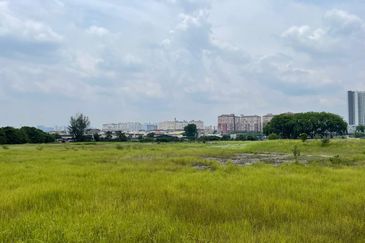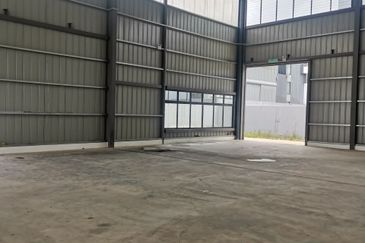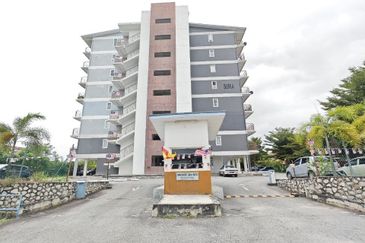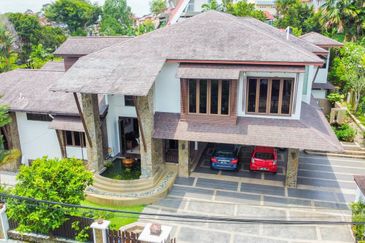
KUALA LUMPUR (April 28): Malaysia’s economy is projected to rebound to 6% in 2021 and stabilise at about 5.7% in 2022, after restrictions to control the spread of Covid-19 cut economic growth in 2020 to its lowest level since the Asian financial crisis, according to the Asian Development Bank (ADB).
In its Asian Development Outlook 2021 (ADO) April edition released today, the bank said Malaysia’s economy is expected to rebound strongly in 2021, supported by the rollout of Covid-19 vaccines, a more stable business environment, and accommodative policies.
It said in line with the growth recovery, inflation will return in the near term and the current account surplus will narrow, mostly on strengthening imports.
It said the technological upgrading of small and medium-sized manufacturing enterprises is emerging as the key policy challenge.
ADB’s ADO noted that Malaysia’s gross domestic product (GDP) contracted by 5.6% year-on-year in 2020 as the economy reeled from the impact of the Covid-19 pandemic and a continued fall in oil prices.
It noted that in 2019, GDP grew by 4.3%, highlighting that a nationwide Movement Control Order in March 2020 helped reduce the spread of the virus, but mobility restrictions and supply chain disruptions took a toll on the economy.
The report said Malaysia’s private consumption contracted by 2.5% year-on-year in 2020 due to job and income losses.
Stricter lockdown measures weighed heavily on business operations, forcing some firms to reduce their workforce.
This worsened the unemployment rate in the first half, which peaked at 5.1% in May, surpassing its five-year average of 3.3%.
Malaysia’s total investment shrank by 12.2% in 2020 on weaknesses in both private and public investment.
Public investment fell for the third straight year, plunging by 21.4% due to the slowdown in government infrastructure spending as Covid-19 disrupted construction activity.
Private investment contracted by 11.9% in 2020 as weak business activity and waning investor confidence caused firms to cut capital spending.
Exports of goods and services in real terms fell by 8.8% in 2020 on weak external demand, supply chain disruptions, and a large drop in tourism.
Malaysia’s exports of oil products and manufactured goods fell from their 2019 levels; that fall, however, was less steep for machinery and transportation goods.
The report added the drop in exports was larger from January to June, but the pace of contraction softened from July to December on a pickup in shipments of electronics and medical products.
Meanwhile, imports shrank by 8.3% in 2020, reflecting depressed domestic demand and disruptions to global production networks and regional supply chains.
Weakening economic activity was accompanied by consumer prices falling 1.1% in 2020 — and this was despite an accommodative monetary policy.
The report said Malaysia’s foreign direct investment plunged in 2020 with a net outflow of US$38.6 billion, adding that portfolio investments also declined.
It said the financial account of the balance of payments recorded an outflow of US$18.8 billion last year, far higher than 2019’s US$8.2 billion.
On the plus side, international reserves, at US$107.6 billion at the end of December 2020, were enough to finance 6.8 months of imports.
Economic prospects
On the country’s economic prospects, ADB said the recovery in investment is likely to be modest as the resumption in construction activity will face near-term setbacks with the reintroduction of some pandemic-related restrictions.
Vaccine availability and firming foreign demand will boost business sentiment and, in turn, support the recovery in private investment.
The resumption of construction on the East Coast Rail Link, MRT Line 2, and the Pan Borneo Highway is also expected to lift public investment in 2021.
The report said the government’s 2021 budget is expansionary, with fiscal stimulus measures totalling RM322.5 billion (equal to 20.6% of GDP).
The measures, which include an extension of wage subsidies, cash handouts, and income tax cuts, should boost consumer spending.
The budget also includes investment incentive packages to attract technology and high value-added investments, income tax incentives for pharmaceutical companies, and other financial support to struggling sectors.
Monetary policy conditions are expected to remain accommodative to support a recovery in domestic demand.
Meanwhile, inflation is expected to return over 2021 and 2022, and remain closely linked to commodity and oil price fluctuations and domestic price control measures.
Inflation is forecast to edge up to 1.8% in 2021. A mild recovery in global energy and commodity prices, combined with the normalisation of economic activity, are expected to raise consumer prices by 2% in 2022.
Get the latest news @ www.EdgeProp.my
Subscribe to our Telegram channel for the latest stories and updates
TOP PICKS BY EDGEPROP

Jalil Damai Apartments
Bukit Jalil, Kuala Lumpur

Taman Shanghai
Jalan Klang Lama (Old Klang Road), Kuala Lumpur
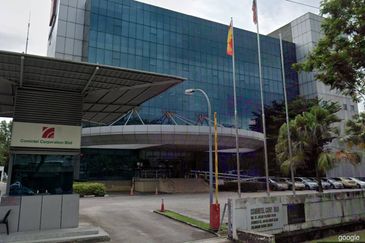
Temasya Glenmarie (Commercial)
Shah Alam, Selangor



